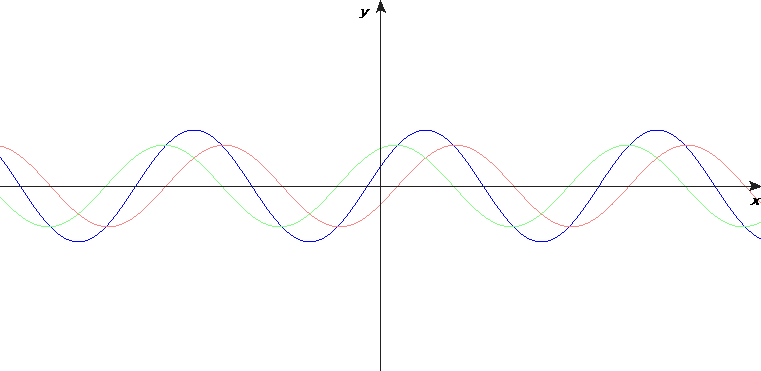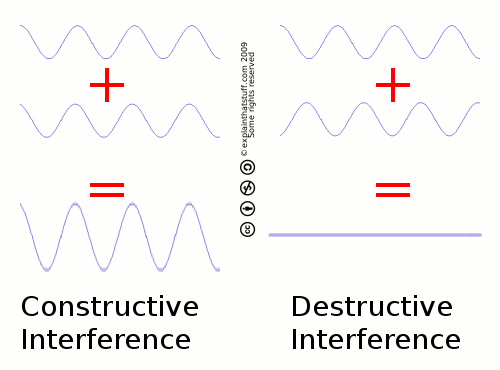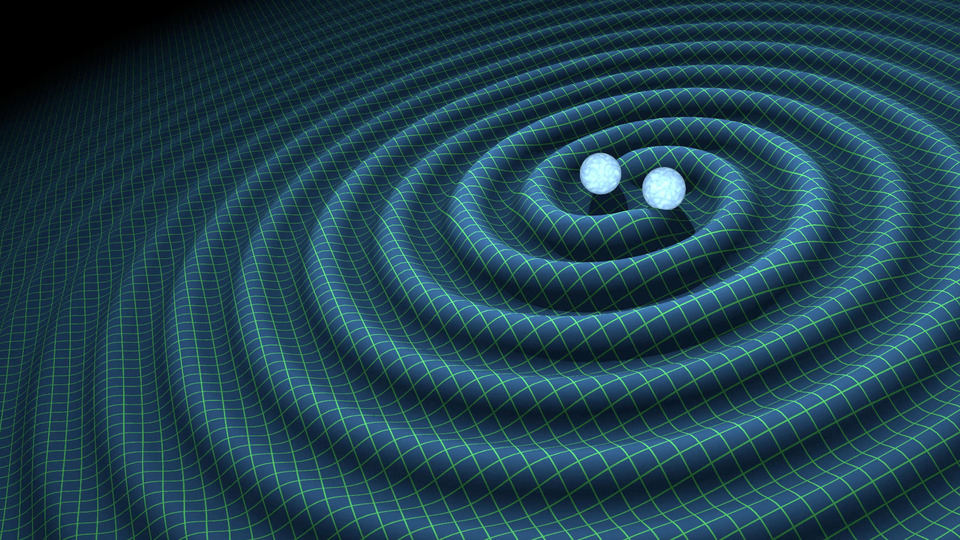Now for the development of wormholes as standing waves, giving us startling explanations and implications for wormholes in New Eden.
Recall my post on standing waves? The ones that look like this:
This shows how two waves can come together to form what appears to be a static oscillation in a medium. My example before was a rope, but now we're going to apply this idea to a rubber sheet analogy of space time.
For a start, space-time is 4-dimensional. It's not nearly so easy to imagine a wave in this environment, without lying a little to ourselves, and pretending the universe is one big sheet of rubber. I'm also assuming here the maths works out. I'm still at the beginner stages of tensor calculus, and so can't prove it yet.
The idea is this:
This is possibly how wormholes in New Eden are formed. From this model, we can now see why wormhole space is sometimes dominated by large mass objects, such as black holes and pulsars. These large objects are causing the necessary gravitational waves to produce natural wormholes. They are also "lowering" the surrounding space-time to make such peak to peak connections easier.
This also explains why wormholes have seemingly random destinations, whilst statics are known to remain in place.
Statics are locations in space where gravitational waves are somewhat constant. There is an ebb and flow of amplitudes, the energy of the waves, but these places are where standing waves can easily form. Essentially, it is a place where a number of gravitational waves comes together to form the peak needed to bend space-time into the wormhole bridge.
However, the exit location is not always the same. This is because, unlike the two black holes joining model, the other locations wave peak is not always fixed. What the static wormhole will do is fix itself to the "closest" possible wave peak. I say "closest", because at this point distance becomes a very tricky concept.
Imagine this: Rather than New Eden's space time being a fairly even and calm pond, like a smooth rubber sheet, it is more like a rolling ocean, with waves and tsunamis crashing around all the time.
Recall my post on standing waves? The ones that look like this:
- Gravitational waves are generated at two sources at a distance from each other.
- As they move towards each other, they form a standing wave in between them.
- The peaks in the waves add to each other to cause the necessary contortion of space-time.
- Elsewhere in the universe, a similar event happens.
- These two peaks join each other, as discussed in the previous post.
See the area in between the two spheres?
A standing wave can readily form there, treating those two circles as fixed points. Now it's unlikely for a spherical object to produce a gravitational wave, so those two spheres really just represent wave generators.
The idea of random wormholes forming due to massive objects bending space-time doesn't work. For New Eden's wormholes to vanish and appear, we would need masses appearing and disappearing, seemingly at random.
But if these waves are so prolific in the cluster, shouldn't we feel the effects? Wouldn't time and space be warping all the time, making space travel, and just general communication a nightmare?
A standing wave can readily form there, treating those two circles as fixed points. Now it's unlikely for a spherical object to produce a gravitational wave, so those two spheres really just represent wave generators.
The idea of random wormholes forming due to massive objects bending space-time doesn't work. For New Eden's wormholes to vanish and appear, we would need masses appearing and disappearing, seemingly at random.
But if these waves are so prolific in the cluster, shouldn't we feel the effects? Wouldn't time and space be warping all the time, making space travel, and just general communication a nightmare?
The reason we don't see the effects of gravitational waves, beyond wormholes, is that the gravitational waves are pathetically low energy. The only time they are strong enough to cause an effect on mass is when we have these standing waves, resonating and adding to each other to increase the amplitude of the wave.
Now we can say why the Drifter wormholes and Sansha wormholes are constructed the way they are.
The structures are placed there to create an artificial gravitational standing wave, which can then link up to whatever location they desire.
We can also extrapolate from here, by saying that some ships may be able to carry gravitational wave generators to produce short term standing waves. These will not be as stable as the gated ones, meaning that only some locations are favourable.
If this is the case, we can now explain why the Seyllin Incident caused the appearance of random wormholes, and perhaps present a new perspective of the function of the EVE Gate itself.









